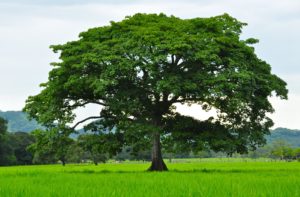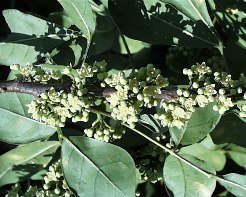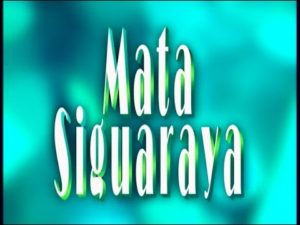 THE SIGUARAYA, KNOWN IN CUBA AS THE WITCH TREE.
THE SIGUARAYA, KNOWN IN CUBA AS THE WITCH TREE.
The Cuban santeros affirm that the Siguaraya contains the seven main orishas of the Yoruba religion.
La Siguaraya, scientifically named ‘Trichilia havanensis’, discovered in 1759 by the Dutch botanist Nikolaus Joseph von Jacquin, is a tree with abundant foliage and greenish-white flowers, which grows in Cuba and, according to the African religion practiced on the Caribbean island, it belongs to the orisha or greater deity known as Shangó.
This plant opens the roads and the luck of those who invoke it, but closes them for the enemy and in the santeros’ trust has seven powers represented by the Yoruba cult in the figures of Yemayá, Elegguá, Ochún Obatalá, Orúnla, Oggún and Changó , for which reason it is considered as the first palo de monte.
From the nectar of the flowers of the Siguaraya, the bees produce an intense and high quality honey.
The Siguraya, located on the banks of rivers and streams, along the paths and in the vicinity of low-lying forests, blooms between January and April and is also called Seven Rays, in reference to Chango, god of thunder and fire, carried through religious syncretism to the image of the Santa Barbara of Catholicism.
This wild plant to which supernatural powers are granted, is not only a patrimony of the Cubans, because it also abounds in Mexico, other Caribbean islands, in some South American countries and in Central America, as is the case of Costa Rica, where it is known like Uruca and formerly announced the beginning of the Christmas festivities.
With the song “Mata Siguaraya”, by Cuban composer and pianist Lino Frías, who died in New York in 1983 and masterfully sung by Benny Moré, the witch tree gained international fame and the song has been interpreted by others, but none so far has achieved intonation and melody printed by the immortal “Bárbaro del Ritmo”.
SPONSORS
 ‘LA SIGUARAYA’, CONOCIDO EN CUBA COMO “EL ÁRBOL BRUJO”.
‘LA SIGUARAYA’, CONOCIDO EN CUBA COMO “EL ÁRBOL BRUJO”.
Los santeros cubanos afirman que la Siguaraya contiene a los siete orishas principales de la religión Yoruba.
La Siguaraya, de nombre científico’Trichilia havanensis”, descubierta en 1759 por el botánico holandés Nikolaus Joseph von Jacquin, es un árbol de abundante follaje y flores blanco verdosas, que crece en Cuba y según la religión africana practicada en la isla caribeña, pertenece al orisha o deidad mayor conocido como Shangó.
Esa planta abre los caminos y la suerte de quienes la invocan, pero los cierra para el enemigo y en la crencia de los santeros posee siete potencias representadas por el culto yoruba en las figuras de Yemayá, Elegguá, Ochún Obatalá, Orúnla, Oggún y Changó, por cuya razón es considerado como el primer palo de monte.
Del néctar de las flores de la Siguaraya, las abejas producen una miel intensa y de alta calidad.
La Siguraya, localizada a orilla de rios y arroyos, a lo largo de los senderos y en las cercanías de los bosques de baja altura, florece entre enero y abril y es llamada también Siete Rayos, en referencia a Chango, dios del trueno y el fuego, llevado a través del sincretismo religioso a la imagen de la Santa Bárbara del catolicismo.
Esta planta silvestre a la cual se atribuyen poderes sobrenaturales, no es sólo patrimonio de los cubanos, porque además abunda en México, otras islas del caribe, en algunos países sudamericanos y en centroamérica, como es el caso de Costa Rica, donde se le conoce como Uruca y antiguamente anunciaba el inicio de las festividades navideñas.
https://youtu.be/fh9jQeXrjn0
Con el tema “Mata Siguaraya”, del compositor y pianista cubano Lino Frías, fallecido en Nueva York en 1983 y cantada magistralmente por Benny Moré, el árbol brujo ganó fama internacional y la canción ha sido interpretado por otros, pero ninguno hasta ahora logró la entonación y melodía imprimida por el inmortal “Bárbaro del Ritmo”.
Agencies/Arrajatabla/Alberto Denis/Internet Photos/ Arnoldo Varona/ TheCubanHistory.com
THE CUBAN HISTORY, HOLLYWOOD.
SPONSORS








